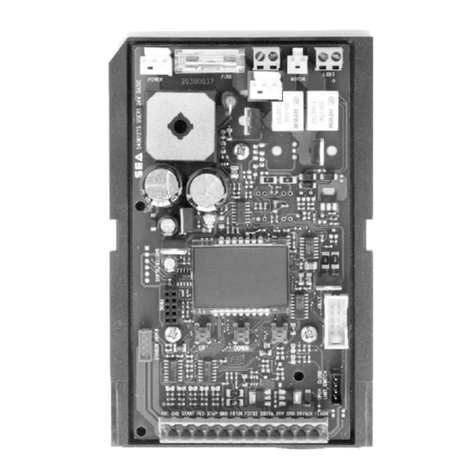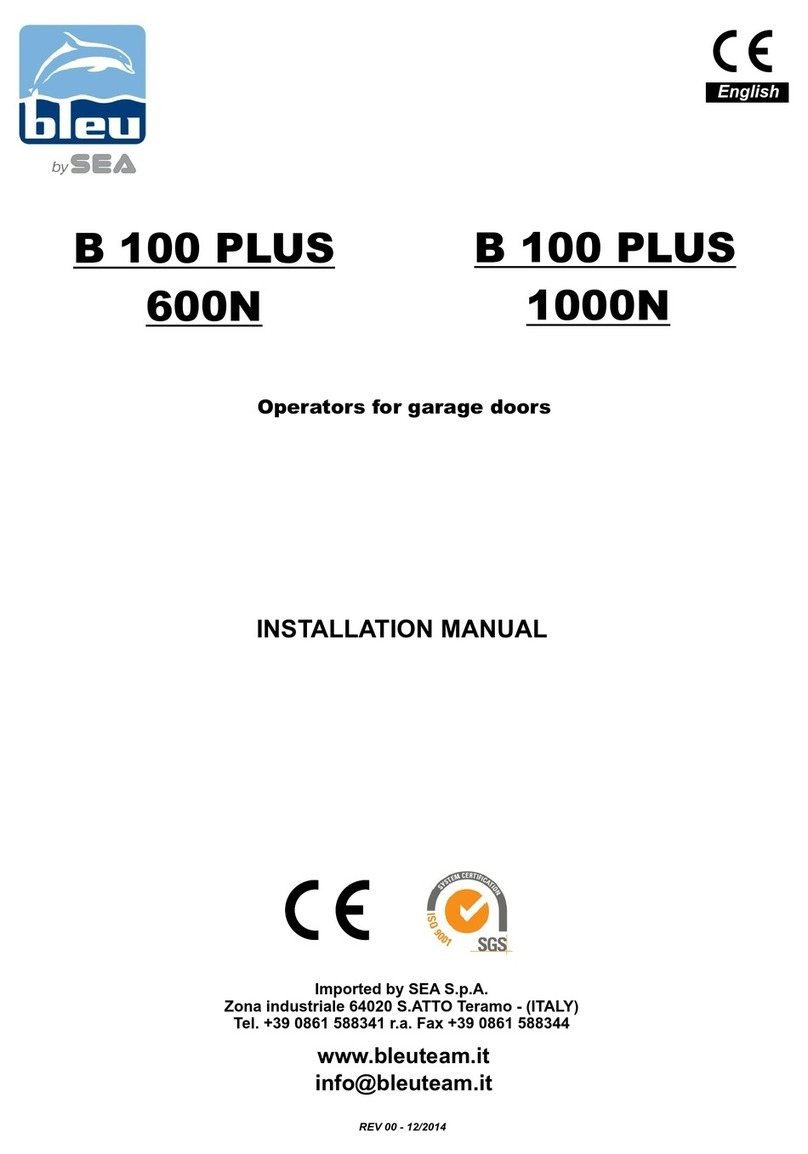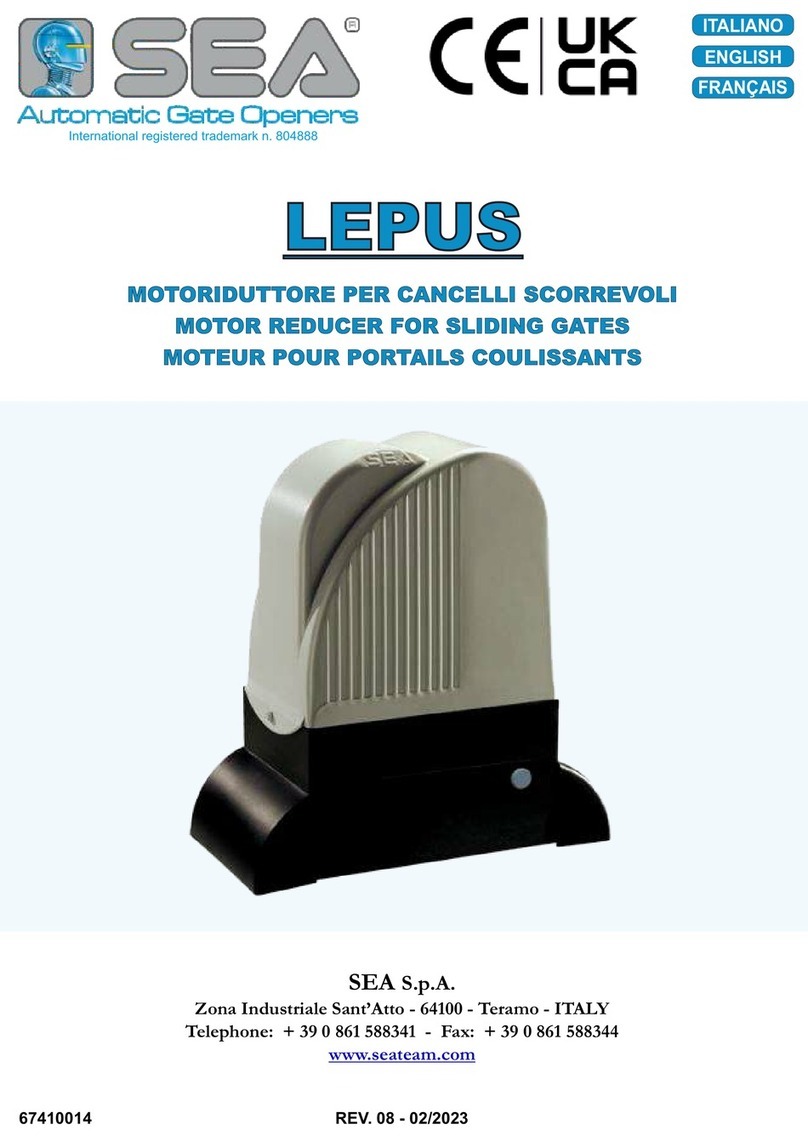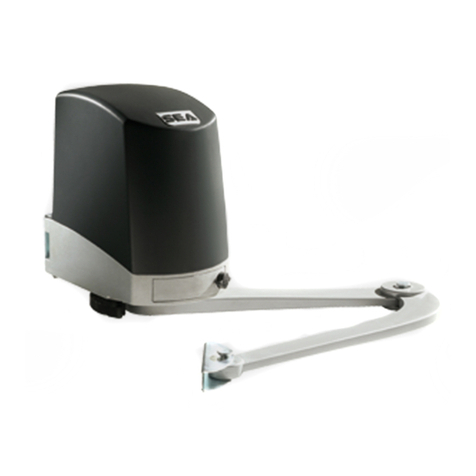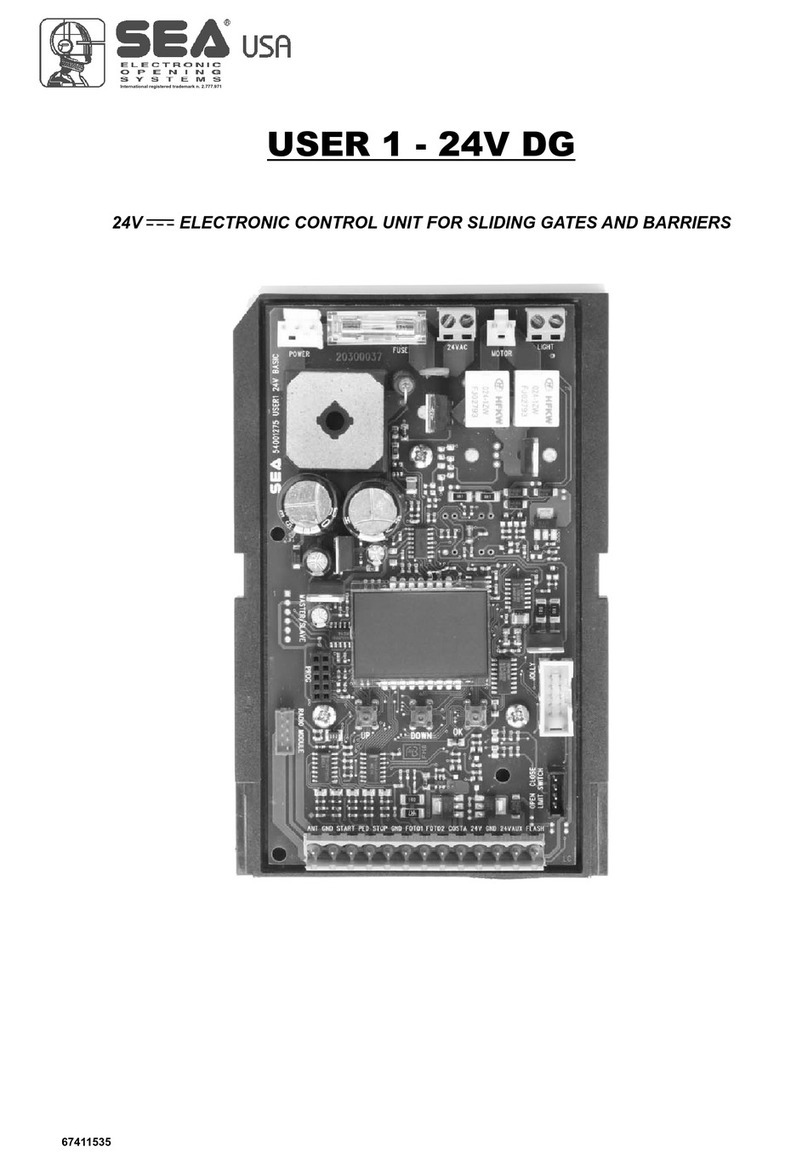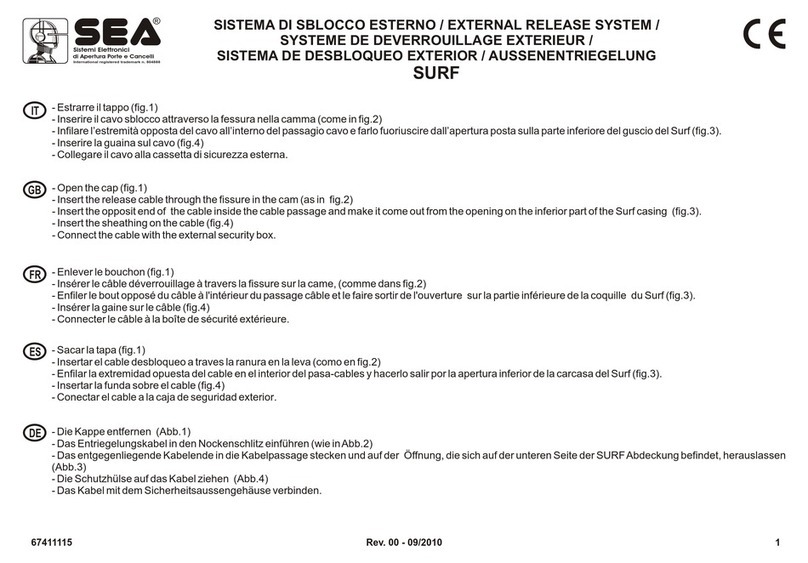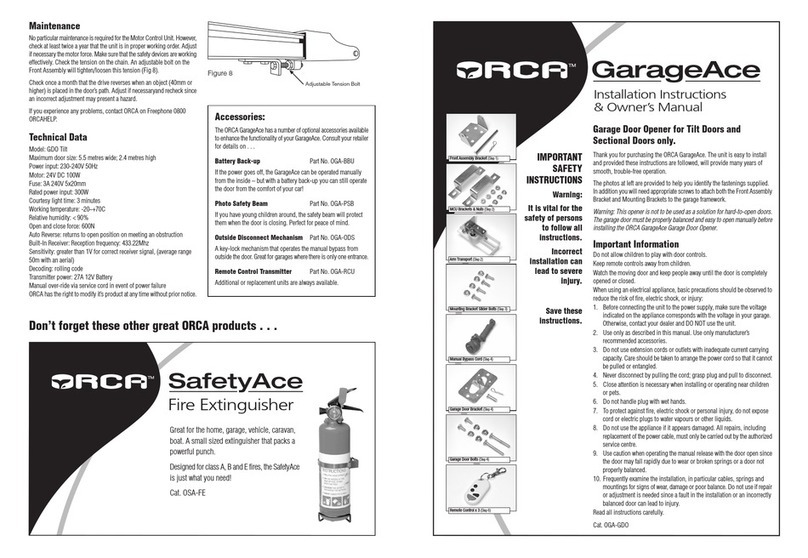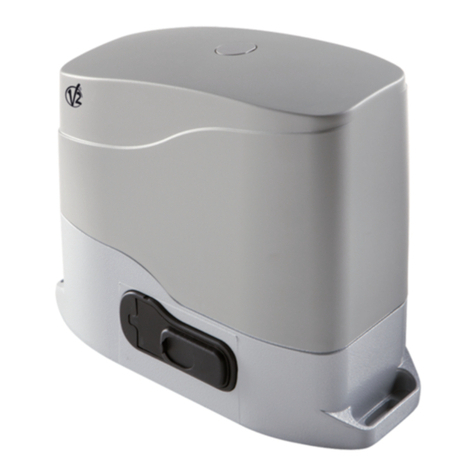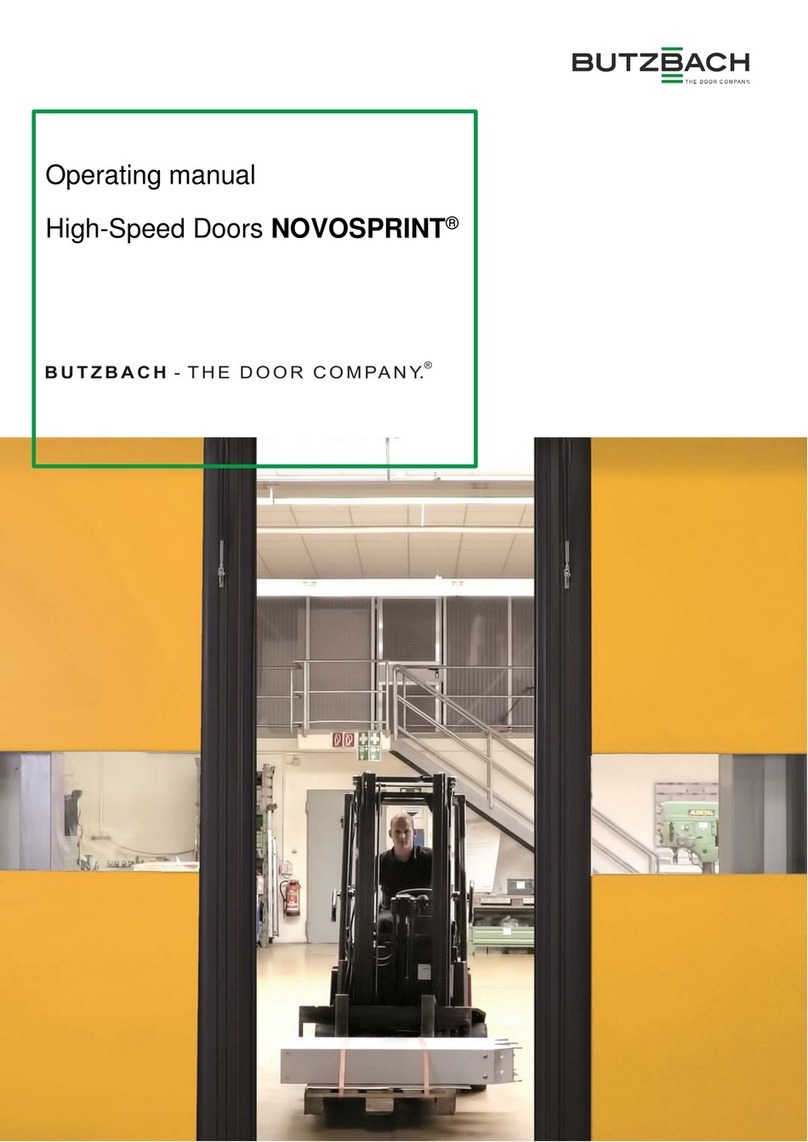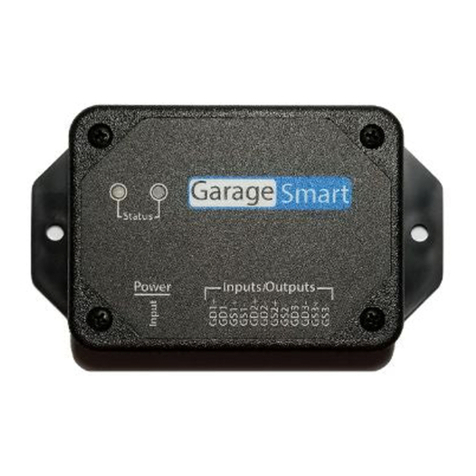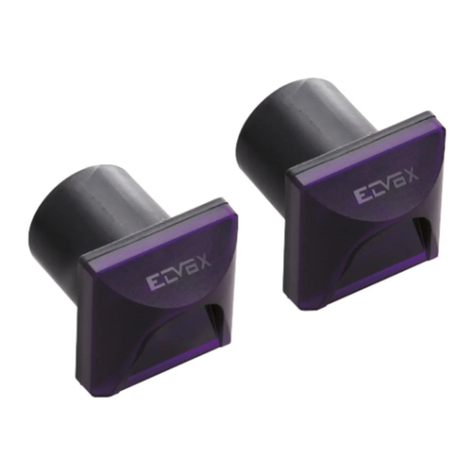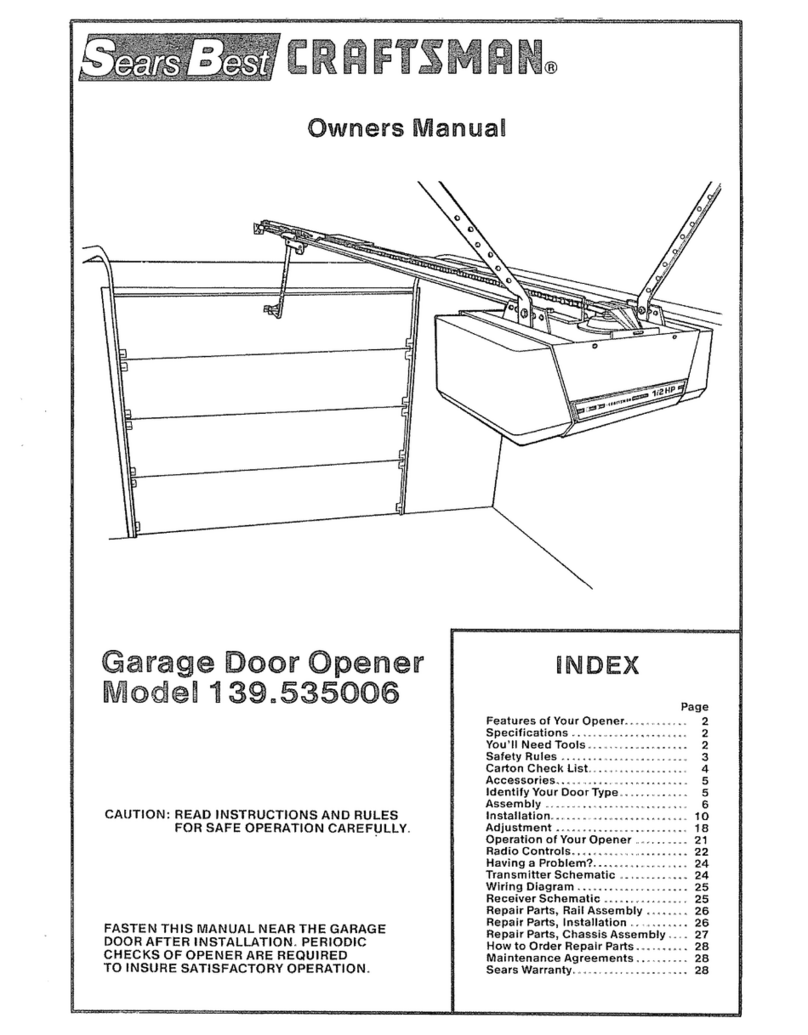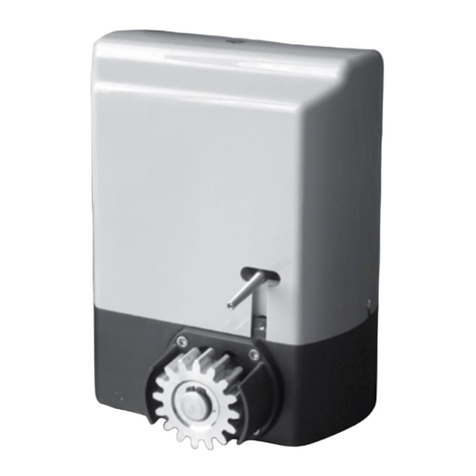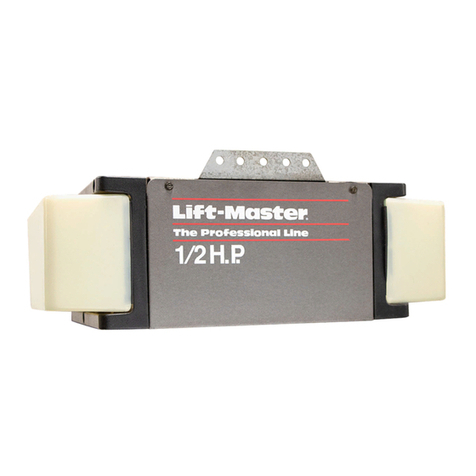SEA GATE 1 DG R2BF User manual

International registered trademark n. 2.777.971
SEA USA Inc.
10850 N.W. 21st unit 160 DORAL MIAMI
Florida (FL) 33172 USA
Tel. - :++1-305.594.1151 ++1-305.594.7325
Toll free: 800.689.4716
web site: www.sea-usa.com
e-mail: [email protected]
CONTROL UNIT FOR SLIDING GATES,
SWING GATES, BARRIERS AND GARAGE DOORS
GATE 1 DG R2BF
Rev.11 - 10/201867410179

International registered trademark n. 2.777.971
IMPORTANT SAFETY INFORMATION
All the above described operations must be made exclusively by an authorized installer
Clean and grease parts in movement (wheels,
counter-connecting rod, release, etc.)
Check for corroded parts and replace if
necessary
Check if the screws and all mounting
hardwares are properly tighten
Annual
Annual
Annual
Check the conditions of wear and tear of the
devices in movement
Check the correct drain of the rainwater
Check the integrity of the connection cables
Annual
Annual
Annual
Inspect the track for any signs of cracking or
separation
Ensure that the gate moves freely
Annual
Annual
Check and confirm the proper operation of all
safety devices (photocells, edge sensors etc)
Check and confirm the operation of all
installed accessories
Check and confirm the operation of the
manual release
Annual
Annual
Annual
TURNING ON THE POWER
Check the battery conditions and be sure that
connections are free of corrosion
Verify the functionally of the battery backup,
or power failure option
BY MAIN POWER SOURCE TURNED OFF
Annual
TURNING OFF THE POWER
CCCC
GENERAL SAFETY PRECAUTIONS
The following precautions are an integral and essential part of the product and must be supplied to the user Read
them carefully as they contain important indications for the safe installation, use and maintenance.
1. These instruction must be kept and forwarded to all possible future users of the system.
2. This product must be used only for that which it has been expressly designed.
3. Any other use is to be considered improper and therefore dangerous.
4. The manufacturer cannot be held responsible for possible damage caused by improper, erroneous or
unreasonable use.
5. Avoid operating in the proximity of the hinges or moving mechanical parts.
6. Do not enter the path of the moving gate while in motion.
7. Do not obstruct the motion of the gate as this may cause a situation of danger.
8. Do not allow children to play or stay within the path of the moving gate.
9. Keep remote control or any other control devices out of the reach of children, in order to avoid possible involuntary
activation of the gate operator.
10. In case of break down or malfunctioning of the product, disconnect from the main power source.
Do not attempt to repair or intervene directly, contact only qualified personnel for repair.
11. Failure to comply with the above may create a situation of danger.
12. All cleaning, maintenance or repair work must be carried out by qualified personnel.
13. In order to guarantee that the system works efficiently and correctly it is important to have the manufacturer's
instructions on maintenance of the gate and operator carried out by qualified personnel.
14. In particular, regular checks are recommended in order to verify that the safety devices are operating correctly.
All installation, maintenance and repair work must be documented and made available to the user.
IMPORTANT SAFETY INSTRUCTIONS
WARNING – To reduce the risk of injury or death:
1. READ AND FOLLOW ALL INSTRUCTIONS.
2. Never let children operate or play with gate controls. Keep the remote control away from children.
3. Always keep people and objects away from the gate. NO ONE SHOULD CROSS THE PATH OF THE MOVING GATE.
4.Test the gate operator monthly. The gate MUST reverse on contact with a rigid object or stop when an object
activates the non-contact sensors. After adjusting the force or the limit of travel, retest the gate operator. Failure to
adjust and retest the gate operator properly can increase the risk of injury or death.
5. Use the emergency release only when the gate is not moving
6. KEEP GATES PROPERLY MAINTAINED. Read the owner’s manual. Have a qualified service person make
repairs to gate hardware.
7. The entrance is for vehicles only. Pedestrians must use separate entrance.
8. Every gate operator installation MUST have secondary protection devices agains entrapments, such as edge
sensors and photo beams more in particulary in places where the risk of entrapments is more likely to occur
9. SAVE THESE INSTRUCTIONS
!
PERIODICAL MAINTENANCE

GENERAL SAFETY INFORMATION
An appliance shall be provided with an instruction manual. The instruction manual shall give instructions for the
installation, operation, and user maintenance of the appliance.
The installation instructions shall specify the need for a grounding-type receptacle for connection to the supply and
shall stress the importance of proper grounding.
The installation instructions shall inform the installer that permanent wiring is to be employed as required by local
codes, and instructions for conversion to permanent wiring shall be supplied.
Information shall be supplied with a gate operator for:
a) The required installation and adjustment of all devices and systems to effect the primary and secondary protection
against entrapment (where included with the operator).
b) The intended connections for all devices and systems to effect the primary and secondary protection against
entrapment. The information shall be supplied in the instruction manual, wiring diagrams, separate instructions, or the
equivalent.
Vehicular gate operators (or systems)
A vehicular gate operator shall be provided with the information in the instruction manual that defines the different
vehicular gate operator Class categories and give examples of each usage. The manual shall also indicate the use for
which the particular unit is intended as defined in Glossary, Section 3. The installation instructions for vehicular gate
operators shall include information on the Types of gate for which the gate operator is intended.
A gate operator shall be provided with the specific instructions describing all user adjustments required for proper
operation of the gate. Detailed instructions shall be provided regarding user adjustment of any clutch or pressure relief
adjustments provided. The instructions shall also indicate the need for periodic checking and adjustment by a qualified
technician of the control mechanism for force, speed, and sensitivity.
Instructions for the installation, adjustment, and wiring of external controls and devices serving as required protection
against entrapment shall be provided with the operator when such controls are shipped with the operator.
Instructions regarding intended installation of the gate operator shall be supplied as part of the installation instructions
or as a separate document. The following instructions or the equivalent shall be supplied where applicable:
IMPORTANT INSTALLATION INSTRUCTIONS
a) Install the gate operator only when:
1) The operator is appropriate for the construction of the gate and the usage Class of the gate,
2) All openings of a horizontal slide gate are guarded or screened from the bottom of the gate to a minimum of 4 feet
(1.22 m) above the ground to prevent a 2-1/4 inch (57.2 mm) diameter sphere from passing through the openings
anywhere in the gate, and in that portion of the adjacent fence that the gate covers in the open position,
3) All exposed pinch points are eliminated or guarded, and
4) Guarding is supplied for exposed rollers.
b) The operator is intended for installation only on gates used for vehicles. Pedestrians must be supplied with a
separate access opening. The partial access opening shall be designed to promote pedestrian usage. Locate the gate
such that persons will not come in contact with the vehicular gate during the entire path of travel of the vehicular gate.
c) The gate must be installed in a location so that enough clearance is supplied between the gate and adjacent
structures when opening and closing to reduce the risk of entrapment. Swinging gates shall not open into public access
areas.
d) The gate must be properly installed and work freely in both directions prior to the installation of the gate operator. Do
not over-tighten the operator clutch or pressure relief valve to compensate for a damaged gate.
e) The gate operator controls must be placed so that the user has full view of the gate area when the gate is moving and
AWAY FROM THE GATE PATH PERIMETER.
f) Controls intended for user activation must be located at least six feet (6’) away from any moving part of the gate and
where the user is prevented from reaching over, under, around or through the gate to operate the controls. Outdoor or
easily accessible controls shall have a security feature to prevent unauthorized use.
g) The Stop and/or Reset button must be located in the line-of-sight of the gate. Activation of the reset control shall not
cause the operator to start.
h) A minimum of two (2) WARNING SIGNS shall be installed, one on each side of the gate where easily visible
International registered trademark n. 2.777.971
3

i) For gate operators utilizing a non-contact sensor:
1) See instructions on the placement of non-contact sensors for each Type of application
2) Care shall be exercised to reduce the risk of nuisance tripping, such as when a vehicle, trips the sensor while the
gate is still moving
3) One or more non-contact sensors shall be located where the risk of entrapment or obstruction exists, such as the
perimeter reachable by a moving gate or barrier
j) For a gate operator utilizing a contact sensor:
1) One or more contact sensors shall be located where the risk of entrapment or obstruction exists, such as at the
leading edge, trailing edge, and postmounted both inside and outside of a vehicular horizontal slide gate.
2) One or more contact sensors shall be located at the bottom edge of a vehicular vertical lift gate.
3) One or more contact sensors shall be located at the pinch point of a vehicular vertical pivot gate.
4) A hardwired contact sensor shall be located and its wiring arranged so that the communication between the
sensor and the gate operator is not subjected to mechanical damage.
5) A wireless contact sensor such as one that transmits radio frequency (RF) signals to the gate operator for
entrapment protection functions shall be located where the transmission of the signals are not obstructed or
impeded by building structures, natural landscaping or similar obstruction. A wireless contact sensor shall
function under the intended end-use conditions.
6) One or more contact sensors shall be located on the inside and outside leading edge of a swing gate. Additionally,
if the bottom edge of a swing gate is greater than 6 inches (152 mm) above the ground at any point in its arc of
travel, one or more contact sensors shall be located on the bottom edge.
7) One or more contact sensors shall be located at the bottom edge of a vertical barrier (arm).
Instruction regarding intended operation of the gate operator shall be provided as part of the user instructions or as a
separate document. The following instructions or the equivalent shall be provided
NOTICE
As for misunderstandings that may arise refer to your area distributor or call our help desk. These instructions are part
of the device and must be kept in a well known place. The installer shall follow the provided instructions thoroughly.
SEA products must only be used to automate doors, gates and wings. Any initiative taken without SEA USA Inc. explicit
authorization will preserve the manufacturer from whatsoever responsibility. The installer shall provide warning notices
on not assessable further risks. SEA USA Inc. in its relentless aim to improve the products, is allowed to make
whatsoever adjustment without giving notice. This doesn’t oblige SEA to up-grade the past production. SEA USA Inc.
can not be deemed responsible for any damage or accident caused by product breaking, being damages or accidents
due to a failure to comply with the instructions herein. The guarantee will be void and the manufacturer responsibility
will be nullified if SEA USA Inc. original spare parts are not being used. The electrical installation shall be carried out by
a professional technician who will release documentation as requested by the laws in force. Packaging materials such
as plastic bags, foam polystyrene, nails etc must be kept out of children’s reach as dangers may arise.
To respect the norms in force it is recommended to use the ENCODER SYSTEM together with the electronic
control units
International registered trademark n. 2.777.971
Starting on Jan. 12, 2016, new UL 325 changes take effect, bringing a series of new mandates for the gate operator
industry. Here’s a quick guide to the key modifications.
1. Entrapment-Protection Devices. Gate operators are required to have a minimum of two independent means of
entrapment protection where the risk of entrapment or obstruction exists. A manufacturer can use two inherent-type
systems, two external-type systems, or an inherent and an external system to meet the requirement. However, the
same type of device cannot be used for both means of protection.
2. Monitoring Required. An external non-contact sensor or contact sensor may be used as a means of entrapment
protection. However, the sensor must be monitored once every cycle for (1) the correct connection to the operator and
(2) the correct operation of the sensor.
If the device is not present, not functioning, or is shorted, then the gate operator can only be operated by constant
pressure on the control device. Portable wireless controls will not function in this case.
3. Entrapment Risk Identification. As in the past, it’s up to the installer to examine the installation and determine
where a risk of entrapment or obstruction exists. Manufacturers are required to provide instructions for the placement
of external devices, but they give only examples of suggested entrapment protection in their installation manuals. If the
installer identifies a risk of entrapment or obstruction, at least two independent means of entrapment protection are
required.
4.Terminology Change. The terms “primary” and “secondary” have been removed in the description of entrapment
protection devices. This was done to emphasize that all entrapment protection devices are equally important.
Changes to UL 325 ED. 6th for Gate Operators
4

5. The End of Type E. Type E (audible alarm) devices can no longer be used for entrapment protection. This change
was made because the Type E device is really a warning device, not an entrapment-protection device. Also, all gate
operator classes are now required to have an audio alarm that sounds when two successive obstructions are
encountered via a contact-type system.
6. Access Control Location for Emergency Use. An exception has been added in the manufacturer’s instructional
requirements for the location of controls that operate the gate.
The instructional requirements state that these controls must be at least 6' away from any moving part of the gate. In the
new exception, “Emergency access controls only accessible by authorized personnel (e.g., fire, police, EMS) may be
placed at any location in the line-of-sight of the gate.”
7. Barrier-Arm Operator Exception. An exception has changed for barrier-arm gate operators requiring entrapment
protection. The previous exception stated that a barrier-arm operator did not require entrapment protection if the arm
did not move toward a rigid object closer than 2'. The distance has been reduced to 16" so it more closely aligns with the
industry-defined entrapment protection provisions in ASTM F2200.
8. Gate Operator Class II and Class III Definitions. The definitions for installation classes for gate operators were
modified. Class II now includes commercial locations accessible to the general public. Class III was refined to specify
industrial locations not accessible to the general public. These changes, while seemingly minor, may affect which gate
operator is suitable for a particular installation location.
UL 325 ED. 6th ENTRAPMENT PROTECTION REQUIREMENTS
This vehicular gate operator must be installed with at least two independent entrapment protection
means as specified in the table below.
International registered trademark n. 2.777.971
VERITICAL BARRIER NOTE:
Barrier gate operators (arm) that is not intended to move toward a rigid objact closer than 16 inches (406mm)
are not required to be provided with a means of entrapment protection
* B1 and B2 means of entrapment protection MUST be MONITORED
HORIZONTAL SLIDE
VERTICAL LIFT - VERTICAL PIVOT
ENTRAPMENT
PROTECTION
TYPES
TYPE A
TYPE B1
TYPE B2
TYPE C
Inherent entrapment protection system
Non-contact sensors such as photoelectric sensors or equivalents
Contact sensors such as edge sensors or equivalent devices
Inherent force limiting, inherent adjustable clutch or inherent pressure relief device
The same type of device shall not be used for both entrapment protection means. Use of a single device to cover both
the opening and closing directions is in accordance with the requirement; however, a single device is not required to
cover both directions. Tice installer is required to install entrapment protection devices in each entrapment zone
TYPE D Actuating device requiring constant pressure to maintain opening or closing motion of the gate
SWING
VERTICAL BARRIER (ARM)
A , B1*, B2* or D A , B1*, B2*, C or D
GATE OPERATOR CATEGORY
Effective January, 12 2016
VEHICULAR GATE OPERATOR CLASSES
Residential Vehicular Gate Operator-Class I: A vehicular gate operator (or system) intended for use in garages or
parking areas associated with a residence of one-to-four single families
Commercial/General Access Vehicular Gate Operator-Class II: A vehicular gate operator (or system) intended for
use in a commercial location or building such as a multi-family housing unit (five or more single family units), hotel,
garages, retail store, or other buildings accessible by or servicing the general public
Industrial/Limited Access Vehicular Gate Operator–Class III: A vehicular gate operator (or system) intended for
use in an industrial location or building such as a factory or loading dock area or other locations not accessible by or
intended to service the general public
Restricted Access Vehicular Gate Operator–Class IV: A vehicular gate operator (or system) intended for use in an
industrial location or building such as a factory or loading dock area or other locations not accessible by or intended to
service the general public
5

COMPONENTS
CN1 = Input/output connectors
Cn2 = Motor - capacitors - courtesy light connector
CN3 = Power connector
CN4 = 24V~ connector
CN5 = Encoder connector
CN6 = Pre-wired limit switch connector
CN7= Limit switch connector not pre-wired
CNA = RX Receiver connector
CNP = Porgramming connector
CNS = RF FIX Receiver connector
EXP = Expansion module connector/LE Card
JOLLY = Jolly 3 connector
DS = Programming display
CMS = MASTER/SLAVE connector
OK = Programming button
DOWN = Programming button
UP = Programming button
T1 = Motor piloting Triac
R1 = Relay C motor command courtesy light
R2 = Relay motor exchange
F1 = 6.3AT fuse on 230V/10AT on 115V
F2 = Accessories 1A fuse
TR1 = Power transformer
TECHNICAL SPECIFICATIONS
Control unit power supply: 230 Vac 50/60 Hz or 115Vac 50/60 Hz
Absorption in stand by: 30 mA
Environment temperature : - 4°F +176°F
Specifications of external enclosure: 183 X 238 X 120 - Ip55
RECEIVER RX
CN2CN3
TR1
JOLLY
CN6
CN1
CMS CN5
CN4
CNA
EXP
R1
R2
UP DOWN OK
DS
CNP
F1
F2
T1
CN7
155 mm
85 mm
JOLLY 3
CNS
CNS
1 2
ON
CN1
CNP
DS1
POTENC
M2
M1
1 2 4
P01 D1 P11 P02 D2 P12 I1
5 6 7
I2
GND
I3 I4
3 8 9 10 11
+ -
LE CARD
6

CONNECTIONS
JUMPERS
WARNING:
The control unit is designed
with the automatic detection
of not used N.C. inputs
(Photocells, Stop and Limit
switch) except the SAFETY
EDGE input. The exclude
inputs in self-programming
can be restored in the
“Check inputs” menu
without need to repeat the
programming
The herein reported functions are available starting from revision 02.01 compatible with Jolly 3
123 4 5 6 7 8 910 11 12 13
CN1
Start
Stop
Common
Antenna
Common
Photocell 1
Common
ANT COM START
PEDST
STOP COM PH1 PH2
EDGE
24VAUX
COM 24V(FL) (FL)-
Safety edge 1
Flash (-)
+ +
- -
AUX
(24V 500 mA max)
24V 500 mA max
(Accessories)
Photocell 2
24Vac
Max 150 mA
CN4
1
LIMIT SWITCH
CN6
CN7
14 15 16 17 18 19 20
CN2
M1
LIGHT
LIGHTN MCL MN MOP CAPACITOR
RADIO MODULE RF FIX
(CNS)
RF FIX
Receiver
connector
(Available from
hardware
revision R2)
Flash N
Flash Light
Motor 1 opening
Motor 1 Neutral
Motor 1 closing
Capacitor
Motor 1
Limit switch Opening 1 (Green)
Limit switch Closing 1 (Yellow)
24V (Red)
Common (White)
Limit switch Opening 1 (Green)
Limit switch Closing 1 (Yellow)
123 4 5 6 7 8 910 11 12 13
CN1
Start
Stop
Common
Antenna
START Partial Opening
START Partial Opening
Common
Photocell 1
Common
ANT COM START
PEDST
STOP COM PH1 PH2
EDGE
24VAUX
COM 24V(FL) (FL)-
Safety edge 1
Flash (-)
+ +
- -
AUX
(24V 500 mA max)
24V 500 mA max
(Accessories)
Photocell 2
Optional
7

- - -
- -
- - -
UP DOWN
5 s 5 s
UP DOWN
PROGRAMMING
FAST SELF-LEARNING
Start quick programming
You can start the quick programming by
holding UP for 5 s in the “Input check
menu", until the motor starts.
Fast self-learning START command by
radio control
You can store the START button of the
remote control while pressing DOWN for 5 s
in the “Input check menu".
Once the writing "Press button" appears,
press the button of the transmitter, which
you want to store for the START command.
By pressing OK, you can exit the menu,
otherwise it will be left automatically after 5
seconds.
“Input check
menu"
8

PROGRAMMING
QUICK START
OK
DOWNUP
PROGRAMMING
BUTTONS
MENU
SEA
SET
MENU
SEA
SET
MENU
SEA
SET
MENU
SEA
SET
MENU
SEA
SET
OK
1
2
3
OK
OK
UP
UP
OK
PRESS
BUTTON STORED
TRANSMITTERS
START
MOTOR
MENU
SEA
SET
MENU
SEA
SET
OK
UP
LANGUAGE
ITALIANO
Skip this step if you do not want to program a transmitter
Press the
button of the
TX to be
stored
OK to exit
Menu or press
the button of
the next TX to
be stored
Choose the type of
motor with UP or DOWN To confirm and return
to main menu
MENU
SEA
SET
RECEIVER
MISSING
If on the display
appears the item: Check if a receiver has
been connceted
MENU
SEA
SET
MENU
SEA
SET
MENU
SEA
SET
MENU
SEA
SET
MENU
SEA
SET
6
7
8
9
OK OK
OK OK
OK
OK
OK OK
OK OK
UP
UP
UP
UP
LOGIC
PAUSE
TIME
START IN
PAUSE
PROGRAM-
MING
TEST
START
10
With UP or DOWN
choose the desired logic To confirm and return
to main menu
With UP or DOWN
choose a delay for
automatic closing
To confirm and return
to main menu
Skip this step
if you want to work
in half-automatic
logic
With UP or DOWN
Choose ON
To confirm and return
to main menu
With UP or DOWN choose ON
to start times learning
At the end of the selflearning
the control unit returns automatically
to the main menu
With
UP or DOWN Choose
ON to start test
To confirm and return to
main menu
Skip this step if a TX has already been stored
MENU
SEA
SET
4OK OK
UP
ONE SINGLE
LEAF
With UP or DOWN choose
ON only if in single
leaf mode (Motor 1)
To confirm and return
to the main menu
Skip this step if you are working in double leaf mode
UP
MENU
SEA
SET
OK
END
15
MENU
SEA
SET
OK
SPECIAL
MENU
16
UP
Press OK to return to the
display of the inputs state
Press OK to enter the special menu
All other parameters have default
settings which are useful for the 90% of
the applications but can be however set
through the special menu. For entering
into the special menu move on one of the
menu and press the up and down
buttons at the same time for 5 seconds
MENU
SEA
SET
Choose ON with
UP or DOWN
if you want to reverse the
direction of the motor rotation
Per confermare
e tornare
al Menu principale
5OK OK
UP
REVERSE
MOTOR
The gate will execute a CLOSING-OPENING-CLOSING CYCLE
UP
9

The control unit is pre-set with the default settings, to start the control unit with the DEFAULT
settings just keep pressed the UP and DOWN buttons at the same time power supplying the control
unit the display shows the message “Init”. The DEFAULT settings are shown in the Menues table.
LEARNING WITH LIMIT SWITCH (WITH OR WITHOUT ENCODER)
When limit switches are mounted, the gate executes automatically the following cycle: CLOSING -
OPENING - CLOSING. Before starting the learning, make sure (through the test menu), that the relative limit
switches of every opening are employed.
WORKING TIMES SELF LEARNING
WORKING TIMES SELFLEARNING THROUGH IMPULSES
ATTENTION: This procedure is potentially dangerous and should only be performed by qualified people in
safety conditions.
NOTE: The card is preset with the standard working times, therefore the automation can be started even
without the times programming, simply by adjusting the timing on the display (see default times).
1) Turn off electricity, release the motors and manually position the leaves on halfway.
Reset the mechanical lock.
2) Connect the control board to the power supply
3) Select on the on-board display or JOLLY3 programmer, the type of motor that you are using as indicated
in the dispaly management.
4) If necessary also set the operation logic and the other parameters. If you want to program with a
transmitter, store a transmitter before programming.
5) Select 9-PROGRAMMING on the display, press OK and than one of the UP or DOWN buttons.
(If the motor starts in opening, remove and re-put power supply, select on the display 5-REVERSE MOTOR.
And through the UP and DOWN button put it on ON, or if you have the Jolly3 programmer, activate the motor
exchange function. )
6) At this point the gate will start the following cycle: CLOSING - OPENING - CLOSING.
During cycle, to store the respective stops, press UP or DOWN or START at every point of stop of the leaf.
7) The self-learning is done.
SELFLERNING OPERATION TIME WITH ENCODER / POTENTIOMETER
When an encoder is installed, it is necessary to select “On” in the 32-ENCODER menu, when the
potentiometer is installed, it is necessary to select “Potentiometer” in the 32-ENCODER menu. Start
programming and make sure that leaf starts as first in closing. With Encoder ON, the gate will automatically
execute the following cycle: CLOSING - OPENING - CLOSING. With potentiometer, the gate will
automatically execute the following cycle: CLOSE - OPENING - CLOSE - OPENING and CLOSING with
SLOW-DOWN.
Note 1: For stop detection sensitivity setting refer to the special menu.
Note 2: With the potentiometer you can also make the learning giving impulses as described under point 6 of
the preceding paragraph. In this case it is also possible to modify the parameters I.AP.M1 and I.CH.M1 of ±
100 impulses, if you need to optimize the initial and the final position.
SELFLEARNING OPERATION TIME WITH AMPEROMETRIC SENSOR
(For electromechanical motors only)
The times learning can be done only on electromechanical gates, taking advantage of the automatic
detection of the stops. Once the programming has been started just make sure that the gate executes the
following cycle: CLOSING - OPENING - CLOSING.
Note: For stop detection sensitivity setting refer to the special menu.
10

FUNCTION LOGIC
AUTOMATIC LOGIC
A start impulse opens the gate. A second impluse during the opening will not be accepted. A start impulse
during closing reverses the movement.
NOTE 1: To have the automatic closing it is necessary to set a pause time, otherwise all the logic will be
semi-automatic.
NOTE2: It is possible to choose, whether to accept or not, the start in pause, selecting in the MENU the item
8-START IN PAUSE and choosing ON or OFF. By default, the parameter is OFF.
SECURITY LOGIC
A start impulse opens the gate. A second impulse during opening reverses the movement. A start impulse
during closing reverses the movement.
NOTE 1: To have the automatic closing it is necessary to set a pause time, otherwise all the logic will be
semi-automatic.
NOTE2: It is possible to choose, whether to accept or not, the start in pause, selecting in the MENU the item
8-START IN PAUSE and choosing ON or OFF. By default, the parameter is OFF.
STEP BY STEP TYPE 1 LOGIC
The start impulse follows the OPEN-STOP-CLOSE-STOP-OPEN logic.
NOTE 1: To have the automatic closing it is necessary to set a pause time, otherwise all the logic will be
semi-automatic.
NOTE2: It is possible to choose, whether to accept or not, the start in pause, selecting in the MENU the item
8-START IN PAUSE and choosing ON or OFF. By default, the parameter is OFF.
STEP BY STEP TYPE 2 LOGIC
The start impulse follows the OPEN-STOP-CLOSE -OPEN logic.
NOTE 1: To have the automatic closing it is necessary to set a pause time, otherwise all the logic will be
semi-automatic.
NOTE2: It is possible to choose, whether to accept or not, the start in pause, selecting in the MENU the item
8-START IN PAUSE and choosing ON or OFF. By default, the parameter is OFF.
DEAD MAN LOGIC
The gate opens as long as the START button of opening is pressed; releasing it the gate stops. The gate
closes as long as the button connected to the PARTIAL OPENING START is pressed; releasing it the gate
stops. To execute complete opening and/or closing cycles the related pushbuttons must be constantly
pressed.
2 PUSHBUTTONS LOGIC
One start opens, one partial opening start closes. In opening the closing will not be accepted. In closing a
start command reopens, a partial opening start command (closes) will be ignored.
PASSWORD ENTERING MANAGEMENT
With a new control unit all menus can be displayed and set and the password will be disabled. Selecting one
of the Menus and keeping UP and DOWN pressed at the same time for 5 seconds, you will access the SP
Menu containing the 112-PASSWORD Submenu. Pressing OK in the 112-PASSWORD Menu, you will
proceed with the entering of the numeric code of the 4-digit password. Use UP and DOWN to increase or
decrease the number, press OK to confirm it and you will pass automatically to the entering of the next
number. Pressing OK after the last entered number the word “Sure?” appears, confirm the activation of the
password and the message OK appears, pressing UP or DOWN instead you can cancel the operation and
“No operation” will appear on the display. Once entered the password, it will be definitively activated, once
the display switch off timeout has expired, or by turning off and on again the control unit. Once the password
has been activated, the menus of the display can be only displayed but not set. To unlock them you must
enter the correct password in the112-PASSWORD menu, if the password is wrong the message “Error” will
appear. At this point, if the password has been entered correctly, the menus will be unlocked and it will be
possible to change the parameters of the control unit again. If the control unit has been unlocked through
112-PASSWORD Menu, it is possible to enter a new and different password, using the same entering
process as for the first one; at this point, the old password will no longer be valid. If the password has been
forgotten, the only way to unlock the control unit is to contact the SEA technical assistance, which will
assess whether to provide the procedure to unlock the control unit or not.
Note: The password cannot be set through the Jolly 3 terminal.
11

SET DESCRIPTION DEFAULT
SET
VALUE
Italiano
Italian
English
English
Français
French
Español
Spanish
Dutch
Dutch
Start
Start
Partial opening
Partial opening
External module
External module
Stop
Stop
Unloch
Storing of a command for unlocking
the electric brake
Delete a transmitter
Delete single transmitter
Clear memory
Delete transmitter memory
End
“Transmitters” menu output
Bistable Stop
Pressed once, it stops the gate.
Pressed twice, it reactivates the
START input
Hydraulic
230V hydraulic operators
Mini/Half/Full/SuperFull Tank - Compact -
SuperCompact - Ara - Joint - Scuti - Lyra -
SuperLyra - Sprint - Vela - Vela Industrial - Tire
Killer
Sliding
230V sliding operators Mercury - Saturn -
Boxer - Lepus - Lepus Industrial - Lepus Box -
Lepus Sectional
Reversible sliding gate
Reversible sliding gate operators
Lepus Reversible - Lepus Industrial Reversible
Magnetic sliding gate
Sliding gate operators with magnetic
limit-switch
Three-phase - Bollards
Operators with Three-phase Module
:Lepus (Threephase - Industrial Threephase -
Box Threephase - Sectional Threephase) - Big
4000. Bollards: Bull - Super Bull - Block -
Super Block
Seagear Seagear
Mechanic
230V Electro-mechanic operators
Alpha - Surf - Kite - Cougar - Ger - Field -
Omega - Song - Tios
Sprint Fast "Sprint Fast" barrier
Vela Rapid "Vela Rapid" barrier
Sliding rack
Rack motor with slowdown Off, Buzzer On
and Photo2 as shadow loop
Sliding magnetic rack
Magnetic rack motor with slowdown Off,
Buzzer On and Photo2 as shadow loop
Sliding chain
Chain motor with slowdown Off, Buzzer On
and Photo2 as shadow loop
Sliding magnetic chain
Magnetic chain motor with slowdown
Off, 70% deceleration, Buzzer On and Photo2
as shadow loop
Erg "Erg" 230V operator
GATE 1 DG R2BF MENU FUNCTIONS TABLE
MENU
1
LANGUAGE
English
2
TRANSMITTERS
Start
Partial
Opening
3
MOTOR
Mechanic
12

SET DESCRIPTION DEFAULT
SET
VALUE
On
In On reverses the opening with the
closing and/or vice-versa (Note:
both motors and limit-swiches are
reversed)
Off Off
Automatic
Automatic
Open-stop-close-stop-open
Step by step type 1
Open-stop-close-open
Step by step type 2
2 button
Two buttons
Safety
Safety
Dead man
Dead man
Off
OFF (semi-automatic logics)
1 240
Setting from 1 second to 4 minutes
Off
The Start is not acceped during
pause
On
The Start is acceped during pause
9
PROGRAMMING Off On Times learning start Off
10
TEST START Off On Start command Off
14
RESET
15
END
16
SPECIAL MENU
MENU
A count-down of 5 seconds will start by keeping pressed the UP button; at its
end "INIT" will appear on the display as confirmation of the control board reset
Press OK to return to the display of the firmware version
and to the one of inputs state
Press OK to enter the special menu
5
REVERSE MOTOR
Off
6
LOGIC
Automati
c
7
PAUSE TIME
Off
8
START IN PAUSE
Off
13

SET DESCRIPTION DEFAULT
SET
VALUE
28
OPENING TORQ 1 10 100
Opening torque Motor 1: by
increasing the torque, more strenght
will be required to execute the
inversion in case of obstacle. Note:
with hydraulic motors the torque
will be on 100%
75
29
CLOSING TORQ 1 10 100
Closing torque Motor 1: by
increasing the torque, more strenght
will be required to execute the
inversion in case of obstacle. Note:
with hydraulic motors the torque
will be on 100%
75
32
ENCODER On
In ON enables the Encoder, in OFF
it's disabled
Off
47 ENCODER PAR. 1 xxx.
48 ENCODER TOT. 1 xxx.
32
ENCODER Potentiometer
Enables the reading of the
potentiometer with LE card
Off
51 I.PAR.M1 - - - - - - - -
52 I.AP.M1
From the value learned
to ± 100 pulses
53 I.CH.M1
From the value learned
to ± 100 pulses
32
ENCODER Off
ON enables the Encoder; OFF shows
working times learnt
Off
65 OPENING TIME M1 xxx.s
66 CLOSING TIME M1 xxx.s
10% (Fast intervention)
99% (Slow intervention)
Adjusts the Encoder or
Potentiometer intervention time on
Motor 1 in opening
Off (Intervention excluded) Disabled
10% (Fast intervention)
99% (Slow intervention)
Adjusts the Encoder or
Potentiometer intervention time on
Motor 1 in closing
Off (Intervention excluded) Disabled
MENU SP
SPECIAL MENU
PRESS AT THE SAME TIME FOR 5 SECONDS TO ENTER OR TO EXIT THE SPECIAL MENU
SPECIAL MENU FUNCTIONS TABLE GATE 1 DG R2BF
For entering into the special menu move on one of the menu and press the UP and DOWN buttons at the same time for 5 s.
For exiting the special menu press END or move on one of the menu and press the UP and DOWN at the same time for 5 s.
34
CLOSING SENSITIVITY
MOTOR 1
Off
Reports the impulses stored by the control unit when
the leaf of Motor 1 is fully close
Indicates the working times self-learning in opening
and closing (Motor 1). With UP or DOWN it is
possible to increase or reduce the working times
33
OPENING SENSITIVITY
MOTOR 1
Off
Impulses read by Encoder during operation (Motor1)
Impulses stored during programming (Motor 1)
Reports the current position of the potentiometer on
the leaf of motor 1. This parameter is useful for
seeing if the potentiometer is read correctly
Reports the impulses stored by the control unit when
the leaf of Motor 1 is fully open
UPDOWN
14

SET DESCRIPTION DEFAULT
SET
VALUE
10% (Fast intervention)
99% (Slow intervention)
Adjusts the amperometric sensiti-
vity in slowdown. Active only if the
motors are electromechanical
Off
With potentiometer
In case of linear potentiometer, this
parameter allows to set the
inversion time in slow-down from 0
to 5 seconds (= 99%)
30%
38
POTENTIOMETER
THRESHOLD OPENING 1
39
POTENTIOMETER
THRESHOLD CLOSING 1
42
POTENTIOMETER
SLOWDOWN THRESHOLD
OPENING 1
43
POTENTIOMETER
SLOWDOWN THRESHOLD
CLOSING 1
Total
In case of obstacle or edge it total-
ly reverses the movement during
closing. If active, the automatic re-
closing will be attempted 5 times
Partial
It partially reverses direction (of
about 30 cm) in case of obstacle,
edge or potentiometer, then it stops
59
OPENING SLOWDOWN 1 Off (*) 50 From OFF to 50% of the stroke 20
60
CLOSING SLOWDOWN 1 Off (*) 50 From OFF to 50% of the stroke 20
63
DECELERATION 0 %
100%
Adjust the passage between nor-
mal speed and slowdown speed
100%
64
ACCELERATION 0 %
100%
Acceleration ramp.
Adjusts the motor start
100%
70
OPENING POSITION
RECOVERY
0 20 seconds
Retrieves the inertia of the motor in
opening after Stop or reversing
1s
71
CLOSING POSITION
RECOVERY
0 20 seconds
Retrieves the inertia of the motor in
closing after Stop or reversing
1s
72
OPENING TOLERANCE
MOTOR 1
0 100
Adjust the tolerance between stop
and obstacle on Motor 1 in opening
0
73
CLOSING TOLERANCE
MOTOR 1
0 100
Adjust the tolerance between stop
and obstacle on Motor 1 in closing
0
For menu 47 and 48 see menu 32-Encoder = On
For menu from 51 to 53 see menu 32-Encoder = Potentiometer
* For motors with hydraulic brake (CF) or double hydraulic brake (2CF) this parameter must be on Off
0 100
Adjust the threshold of the
potentiometer in slowdown. By
default this value is set on 1 and can
be increased manually up to the
maximum value read on the DEBUG
VPI, VP2 Menu
MENU SP
37
SLOWDOWN SENSITIVITY
MOTOR
0 1000
Adjusts the threshold of the
potentiometer intervention. The
parameter self-determines in
learning but can also be adjusted
later. The lower the value, the
slower will be the response of the
potentiometer. The parameter can
be set as maximum threshold at the
value read on the DEBUG VPI, VP2
menu
46
CLOSING INVERSION
Partial
15

SET DESCRIPTION DEFAULT
SET
VALUE
Time
Pushing Off - 3 sec
Stroke
Before opening, the motor starts in
closing for the set up time, in order
to simplify the lock release
Repeat
Lock Off – On
Release
If On, the lock will release as before
as after the pushing stroke
End
Only opening
Only closing
Opening and closing
Off
Off
Opening and closing
Only closing
Only opening
81
PERIODICAL PUSHOVER Off 8
Allows the repetition of the
pushover function at a distance of
time adjustable from 0 to 8 hours at
hourly intervals
Off
Opening 1 Off - 3 s
Closing 1 Off - 3 s
Opening 2 Off - 3 s
Closing 2 Off - 3 s
End
83
EXTRA TIME 0.0 s 10 s
With limit-switches, it adds an extra
time to the movement of the motors
after the limit-switches reading
0.0 s
84
BRAKE Off 100%
Adjusts the braking on the limit
switches
0
Only closing
Pre-flashing only active before
closing
0.0 5.0 s
Pre-flashing
Normal
Normal
Light
Control lamp
Always
Always ON
Buzzer
Buzzer
Off
The flashing light remains OFF with
active timer and open gate
On
The flashing light remains ON with
active timer and open gate
Off
Disabled
1 240
Courtesy light setting from 1sec. to
4min.
In cycle
Courtesy light in cycle
89
TRAFFIC LIGHT
RESERVATION
Off On
When setting this function the
partial input will be activated to
work on the auxiliary board "SEM"
(traffic light management)
Off
90
PARTIAL OPENING 20 100 Setting from 20 to 100 100
88
COURTESY LIGHT
20
87
FLASHING LIGHT AND
TIMER
Off
If different from Off, the motor
slightly reverse its direction at the
end of the cycle
Off
(hydraulic)
0.1
(mechanic)
85
PRE-FLASHING
Off
86
FLASHING LIGHT
Normal
76
PUSHING STROKE
Off
79
ANTI INTRUSION
If the gate is forced manually, the
control unit starts the motor to re-
store the state of the gate before
forcing (only with limit switch)
Off
80
PUSHOVER
Allows the leaf to make an extra
move at maximum torque to ensure
the tightening
Off
82
MOTOR RELEASE
MENU SP
16

SET DESCRIPTION DEFAULT
SET
VALUE
= Start
Pause in partial opening same as in
total opening
Off
Disabled
1 240
Setting from 1second to 4 minutes
Off
On photo2
On partial entry
Off
Disabled
On Photo2
Function active on Photocell 2
On Partial entry
Function active on Partial entry
input
Always
AUX output always Power supplied
In cycle
AUX output active only during cycle
Opening
AUX output power supplied only
during opening
Closing
AUX output power supplied only
during closing
In pause
AUX out put power supplied only
during pause
Autotest
Security test
In cycle and phototest
AUX output only during cycle with
fototest function active
Positive brake
management
Positive Electrobrake (24V in On
with stationary gate )
Negative brake
management
Negative Electrobrake (24V in On
with gate in cycle and 1 second
before the start)
Negative brake and
Photocell management
Negative electrobrake not active on
intervention of the photocell
Open gate warning Light
1 flash per second in opening
2 flashes per second in closing
Steady lit in Stop or Open
Lock
Simulates the activation of the lock
command. Note: you need a relay
and an external power supply to
activate the lock
Opening and open
24V AUX will be active only du-
ring opening and with open gate
Courtesy light It will work as per Menu-88 settings
Start 3 s
If active, the 24VAUX output is
activated for 3 seconds at every
Start input, every photocells or edge
intervention
Barrier Led lights
the 24Vaux output will pilot the
lights on the barrier so that, with the
beam closed the light is on, with the
beam opened the light is switched
off and with the moving beam the
light is blinking
FIRE SWITCH
93
94
24V AUX
(Max. 500 mA)
Always
92
TIMER
Turn the selected input into an input
to which connecting an external
clock
Off
91
PARTIAL PAUSE
= start
MENU SP
17

SET DESCRIPTION DEFAULT
SET
VALUE
Photo 1
Self-test active only on photo 1
Photo 2
Self-test active only on photo 2
Photo 1 and 2
Self-test active on photo 1 and 2
Off
Disabled
Edge
Self-test active only on security edge
Photo 1 and Edge
Self-test active on photocell 1 and
security edge
Photo 2 and Edge
Self-test active on photocell 2 and
security edge
Off
Disabled
Closing
If the photocell is occupied, it
reverses the movement in closing;
during the pause, it prevents the
reclosing
Opening and closing
If active the photocell blocks the
movement as long as it is busy;
when released, the opening
movement continues
Stop
If the photocell is activated before
the Start input, the Start will be
ignored. If the photocell is activated
after the Start input, the photocell
will be ignored. If the photocell is
activated during closing, the gate
will reopen
Stop and close
In closing, the photocell stops the
movement until it is occupied; when
released the closing movement
continues
Close
The photocell stops the gate until it
is occupied in both opening and
closing; when released, it gives a
closing command (it closes one
second after its release)
Pause reload
If occupied, during pause the
photocell recharges the time of
pause. In closing it reverses the
movement
Shadow loop
Until occupied, with open gate, it
prevents reclosing. It is switched off
during closing
Delete pause time
If occupied during opening, pause or
closing, the gate reopens completely
and closes without observing the
pause time
Shadow loop RP
(pause reloading)
If the shadow loop is temporarily
released, the pause time is reloaded
before closing
MENU SP
95
FOTOTEST
Off
97
PHOTOCELL 1
SHADOW LOOP 1
Closing
18

SET DESCRIPTION DEFAULT
SET
VALUE
Closing
If the photocell is occupied, it
reverses the movement in closing;
during the pause, it prevents the
reclosing
Opening and closing
If active the photocell blocks the
movement as long as it is busy;
when released, the opening
movement continues
Stop
If the photocell is activated before
the Start input, the Start will be
ignored. If the photocell is activated
after the Start input, the photocell
will be ignored. If the photocell is
activated during closing, the gate
will reopen
Stop and close
In closing, the photocell stops the
movement until it is occupied; when
released the closing movement
continues
Close
The photocell stops the gate until it
is occupied in both opening and
closing; when released, it gives a
closing command (it closes one
second after its release)
Pause reload
If occupied, during pause the
photocell recharges the time of
pause. In closing it reverses the
movement
Shadow loop
Until occupied, with open gate, it
prevents reclosing. It is switched off
during closing
Delete pause time
If occupied during opening, pause or
closing, the gate reopens completely
and closes without observing the
pause time
Shadow loop RP
(pause reloading)
If the shadow loop is temporarily
released, the pause time is reloaded
before closing
Stop and open
If the photocell is activated during
opening, the gate will stop and will
continue opening movement only
when the photocell is released. The
photocell is ignored during closing
Stop N.O.
Stop connection on ERG push-
button panel
98
PHOTOCELL 2
SHADOW-LOOP2
Opening
and
Closing
MENU SP
19

SET DESCRIPTION DEFAULT
SET
VALUE
Normal
Normal N.C. contact
8K2
Edge is active and protected by a
8K2 resistor
8K2 Double
Allows to connect two 8K2
protected edges
Photo 1 10K
Edge works as a photocell protected
by a 10K resistor
Photo 1 10K Double
It is possible to connect two pho-
tocells protected by a 10K resistor
Opening and closing
Active in opening and closing
Only opening
Active only in opening
Only closing
Active only in closing
Automatic
Limit switch in automatic
recognition
Only opening
Active limit-switch in opening only
Only closing
Active limit-switch in closing only
Motor internal
To be activated if there is a limit-
switch that stops the motor phase
Ext
Limit-switch connected on the
interface board for 4 cams limit-
switches
Master
On applications with two motors in
master-slave, it allows to set the
control unit as master
Slave
On applications with two motors in
master-slave, it allows to set the
control unit as slave
Off Disabled
106
DIAGNOSTICS 1 10 Shows last event (See alarms table)
107
MAINTENANCE CYCLES 100 240000 Setting from 100 to 240000 100000
108
PERFORMED CYCLES 0 240000
Reports the executed cycles. Keep
pressed OK to reset the cycles
0
109
THERMOMETER On Off
In ON you can insert the piston oil
temperature probe combined with
the LE card
Off
110
LOWER THRESHOLD
TEMPERATURE
From -20° to +50°
Regulates the activation threshold of
the motor oil heater
-10°
111
UPPER THRESHOLD
TEMPERATURE
From -20° to +50°
Regulates the deactivation threshold
of the motor oil heater
0°
MENU SP
104
SELECT LIMIT SWITCH
Automatic
Normal
102
SECURITY EDGE 1
DIRECTION
Opening
and
Closing
100
SECURITY EDGE 1
105
MASTER-SLAVE
20
Other manuals for GATE 1 DG R2BF
7
Table of contents
Other SEA Garage Door Opener manuals

SEA
SEA SATURN 24V 1500 Quick start guide

SEA
SEA Mercury Guide

SEA
SEA LEPUS 800 Instruction manual

SEA
SEA Saturn 600 User manual
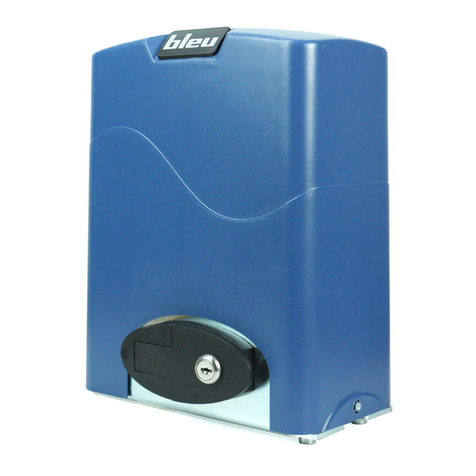
SEA
SEA BLEU B200 User manual

SEA
SEA Compact 400 Instruction manual

SEA
SEA TAURUS RACK Series User manual

SEA
SEA STAR 500 User manual

SEA
SEA SURF Series User manual

SEA
SEA Saturn 600 Quick start guide
Popular Garage Door Opener manuals by other brands
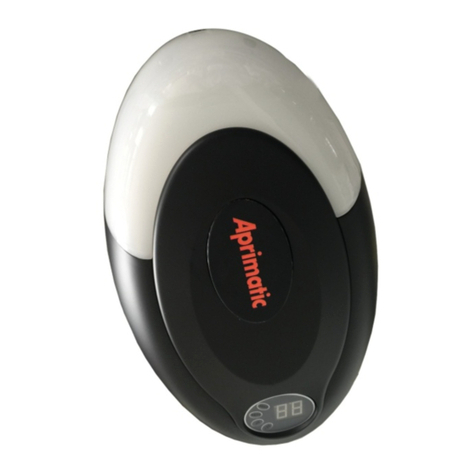
Aprimatic
Aprimatic MATIC BOX Instructions for use and installation
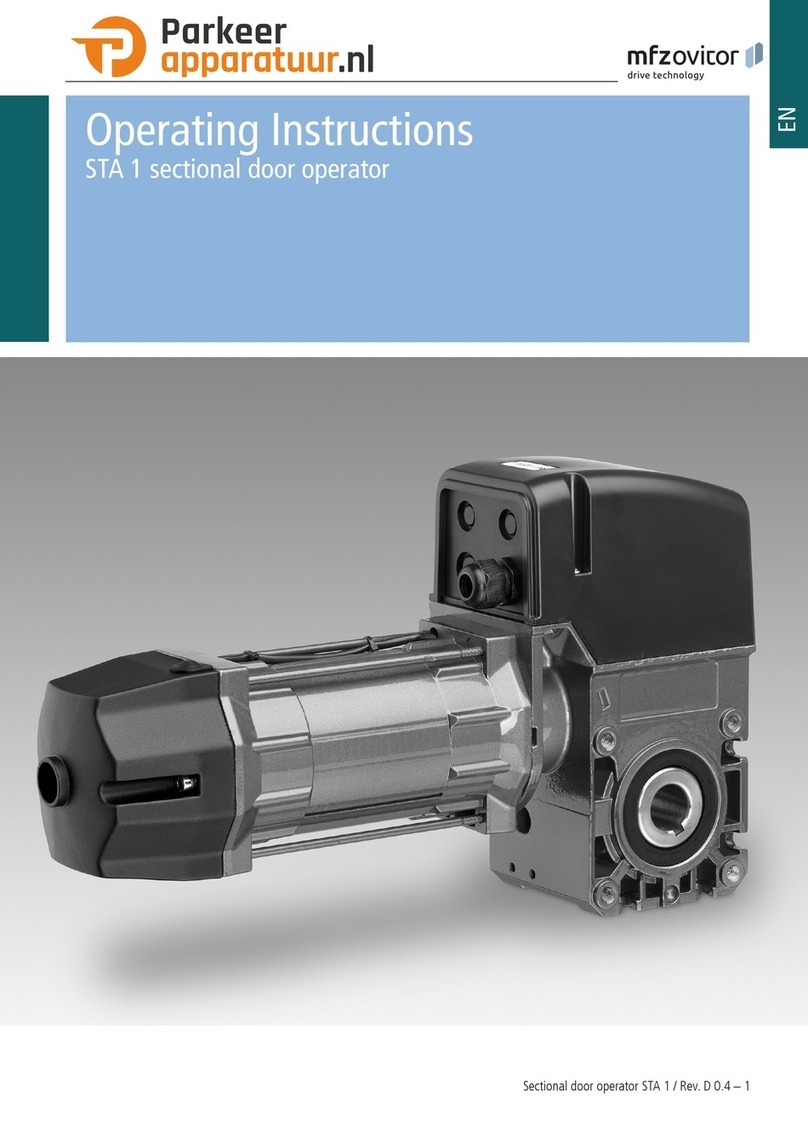
MFZ Ovitor
MFZ Ovitor STA 1 KE operating instructions
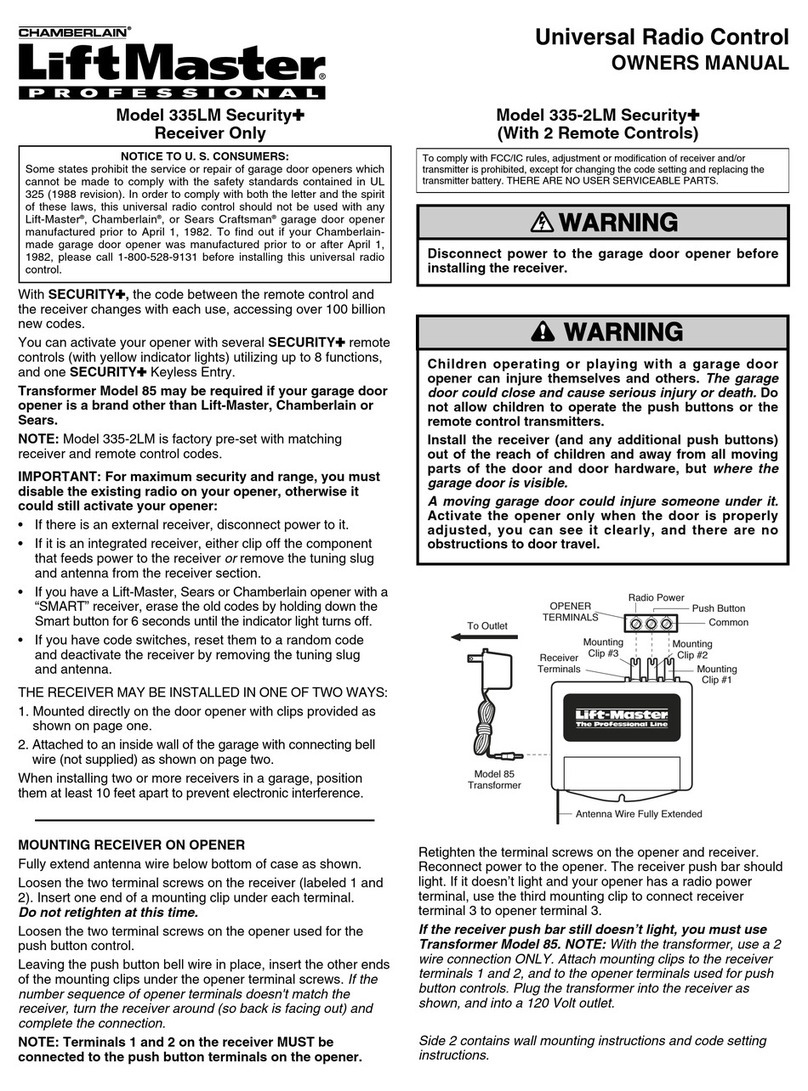
Chamberlain
Chamberlain LiftMaster 335LM Security+ owner's manual
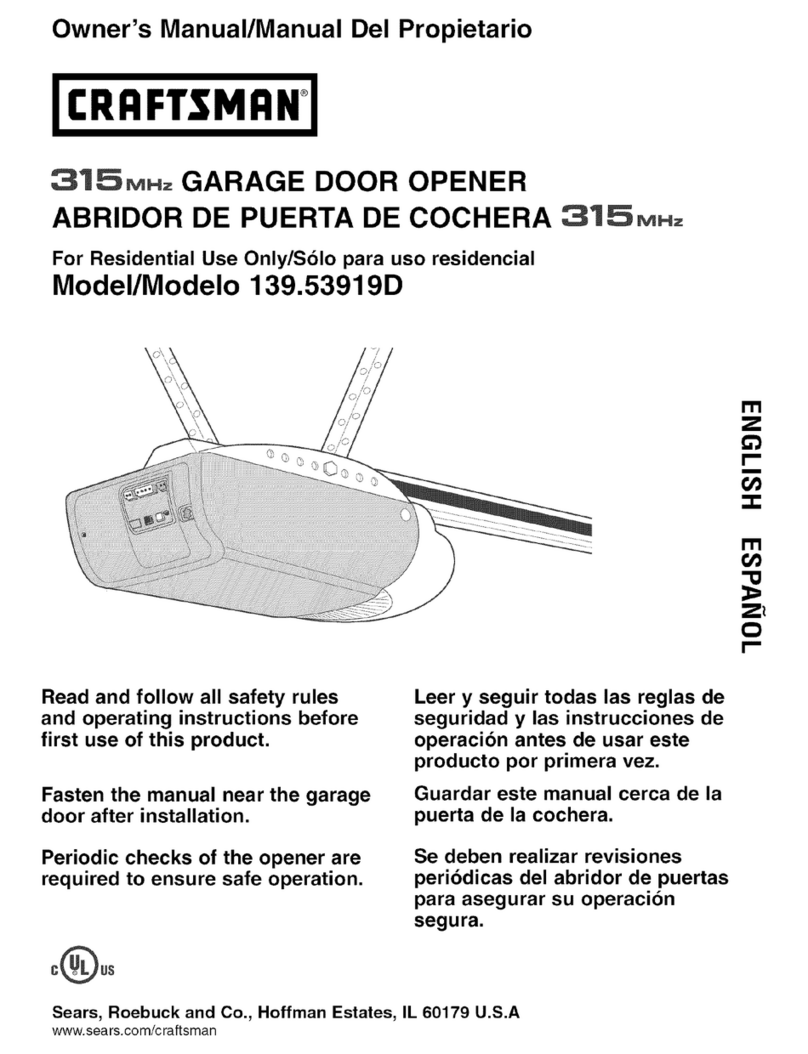
Craftsman
Craftsman 139.53919D owner's manual
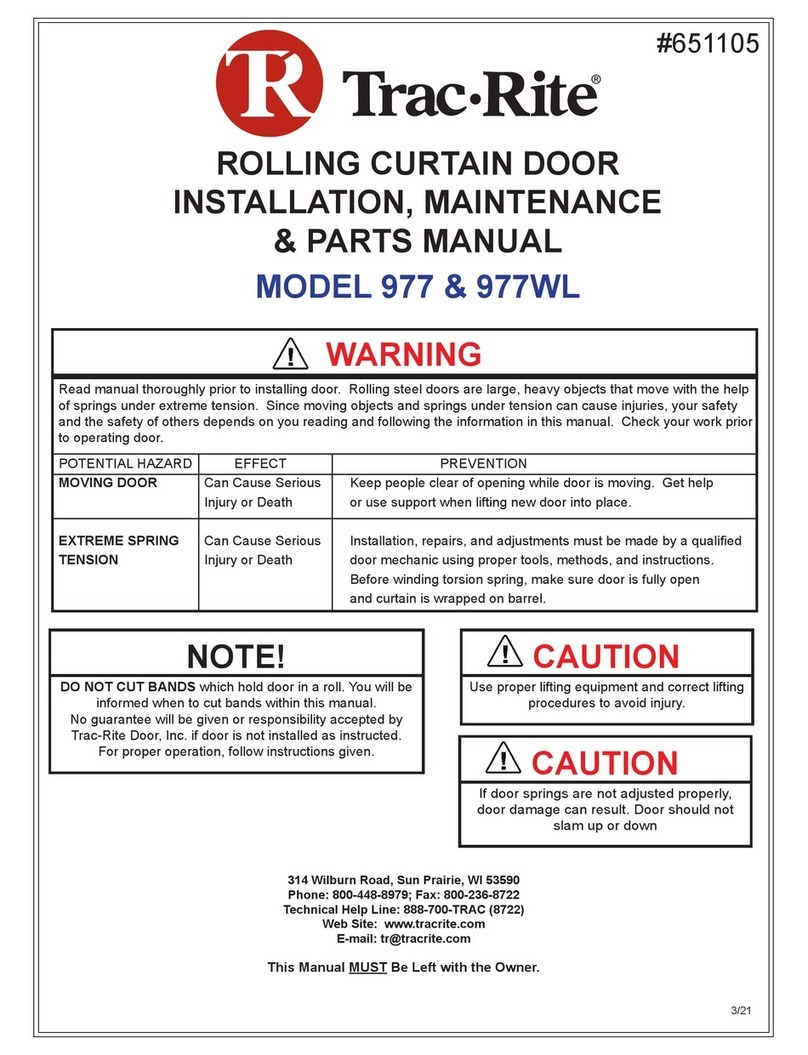
Trac-Rite
Trac-Rite 977 Installation, maintenance & parts manual
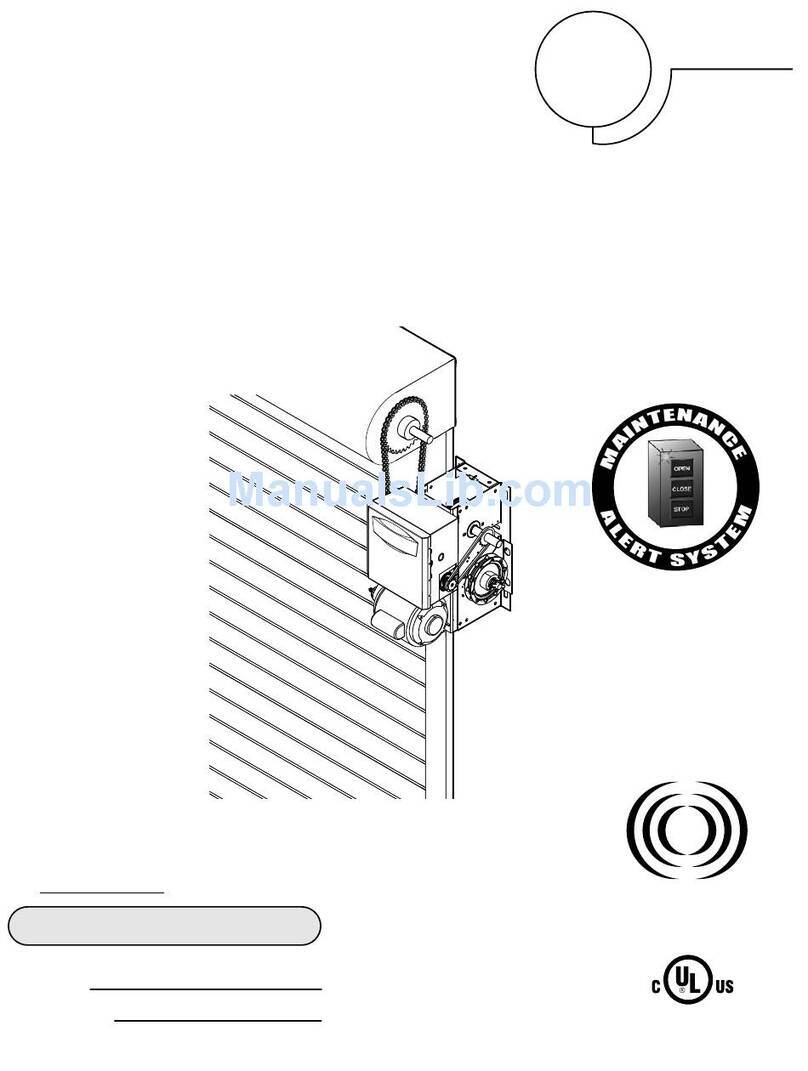
Chamberlain
Chamberlain H owner's manual
